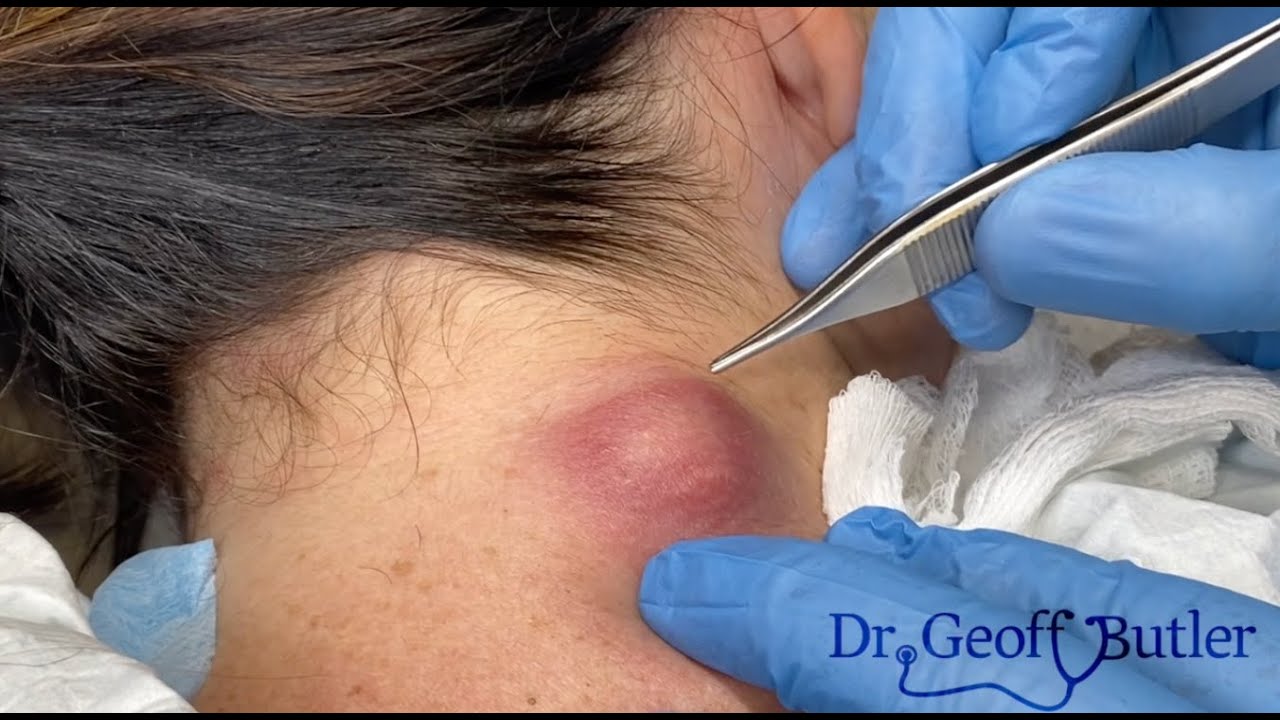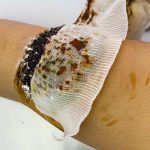Drainage of an Inflamed epidermal cyst at the nape of the neck
Please scroll down to watch the video.👇👇
Draining an inflamed epidermal cyst—especially at the nape of the neck—should only be done by a medical professional, as improper drainage can lead to infection, scarring, or worsening of inflammation. However, here’s a clear breakdown of how it’s typically done in a clinical setting:
⚠️ IMPORTANT:
Never attempt to drain an inflamed or infected cyst at home. Inflamed cysts are often surrounded by tissue that’s more fragile and prone to complications, and they may require antibiotics.
Clinical Steps for Draining an Inflamed Epidermal Cyst
-
Preparation and Sterilization:
-
The area is cleaned with an antiseptic solution like chlorhexidine or povidone-iodine.
-
Local anesthesia (e.g., lidocaine) is injected to numb the area.
-
-
Incision and Drainage (I&D):
-
A small incision is made over the most fluctuant (softest) part of the cyst.
-
Purulent (pus) material is drained out using gentle pressure and sterile gauze.
-
-
Cyst Wall Consideration:
-
If the cyst is too inflamed or infected, the entire cyst wall (sac) is usually not removed immediately, as this increases the risk of incomplete excision and recurrence.
-
Instead, the doctor may allow inflammation to subside first, and plan for definitive excision later (once swelling goes down).
-
-
Irrigation and Packing:
-
The cavity is irrigated with saline to clear debris.
-
Depending on the size, it may be loosely packed with gauze to allow continuous drainage.
-
-
Aftercare:
-
Antibiotics (oral or topical) may be prescribed if signs of infection are present (redness, warmth, fever).
-
Pain management with NSAIDs (e.g., ibuprofen).
-
The patient is advised to return in 24–48 hours for dressing change and follow-up.
-
Signs You Should See a Doctor Immediately:
-
Rapidly growing or very painful lump
-
Fever or chills
-
Red streaks from the area (a sign of spreading infection)
-
Recurrence or no improvement within 48–72 hours
Draining an inflamed epidermal (epidermoid) cyst at the nape of the neck is a procedure that should be performed by a qualified healthcare professional. Attempting to drain such a cyst at home can lead to complications, including infection, scarring, and recurrence. Below is a detailed overview of the clinical approach to managing an inflamed epidermal cyst:
🔍 Clinical Overview
Epidermal cysts are benign, slow-growing lumps under the skin, often resulting from blocked hair follicles. When inflamed, they may become red, tender, and swollen, sometimes mimicking an abscess. Inflammation can result from rupture, infection, or trauma to the cyst.
🩺 Clinical Management Steps
1. Assessment and Diagnosis
-
Physical Examination: Evaluate the cyst for signs of infection (e.g., redness, warmth, pus).
-
Imaging: Ultrasound may be used to assess the cyst’s contents and surrounding structures, especially if the diagnosis is uncertain.
-
Differential Diagnosis: Rule out other conditions such as lipomas, abscesses, or malignancies.
2. Initial Management
-
Avoid Immediate Incision and Drainage (I&D): If the cyst is inflamed but not infected, immediate I&D is generally avoided as it can increase the risk of recurrence and complicate future excision .
-
Corticosteroid Injection: Injecting a corticosteroid (e.g., triamcinolone) into the inflamed cyst can reduce inflammation and facilitate subsequent surgical removal .
-
Antibiotics: If there are signs of infection, oral antibiotics may be prescribed.
3. Definitive Treatment: Surgical Excision
Once inflammation has subsided, complete surgical excision of the cyst and its capsule is the definitive treatment to prevent recurrence.
Procedure:
-
Anesthesia: Local anesthesia is administered around the cyst.
-
Incision: A small incision is made over the cyst.
-
Excision: The entire cyst wall and contents are carefully removed.
-
Closure: The incision is closed with sutures.
This approach minimizes the risk of recurrence and allows for histopathological examination to rule out malignancy .
⚠️ Important Considerations
-
Do Not Attempt Self-Drainage: Attempting to drain the cyst at home can lead to infection, scarring, and recurrence.
-
Seek Medical Attention: If you notice rapid growth, increased pain, signs of infection, or recurrence, consult a healthcare provider promptly.
📚 References
-
StatPearls: Epidermal Inclusion Cyst
-
Medscape: Epidermoid Cyst Treatment & Management
-
Cleveland Clinic: Epidermal Inclusion Cysts (Sebaceous Cysts)
-


